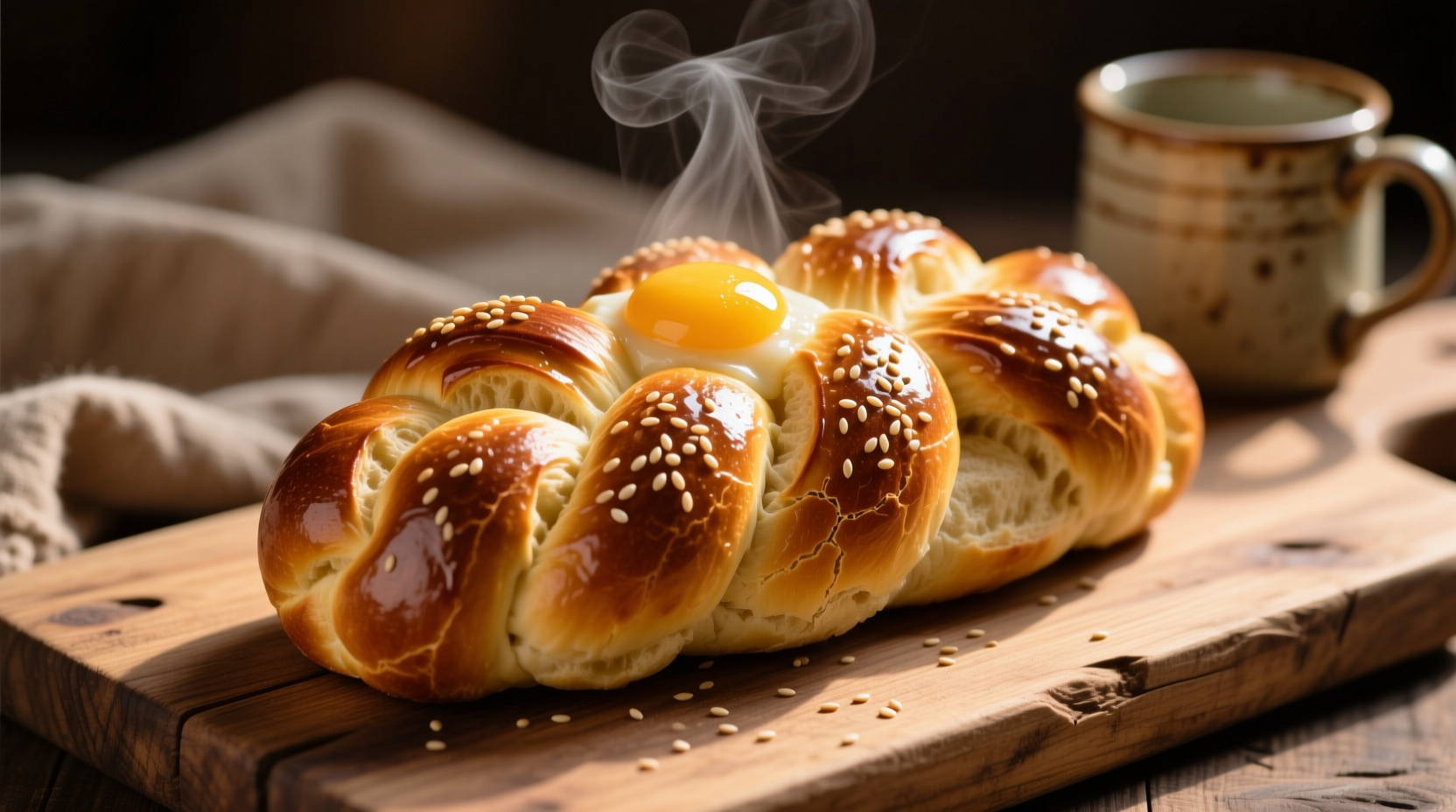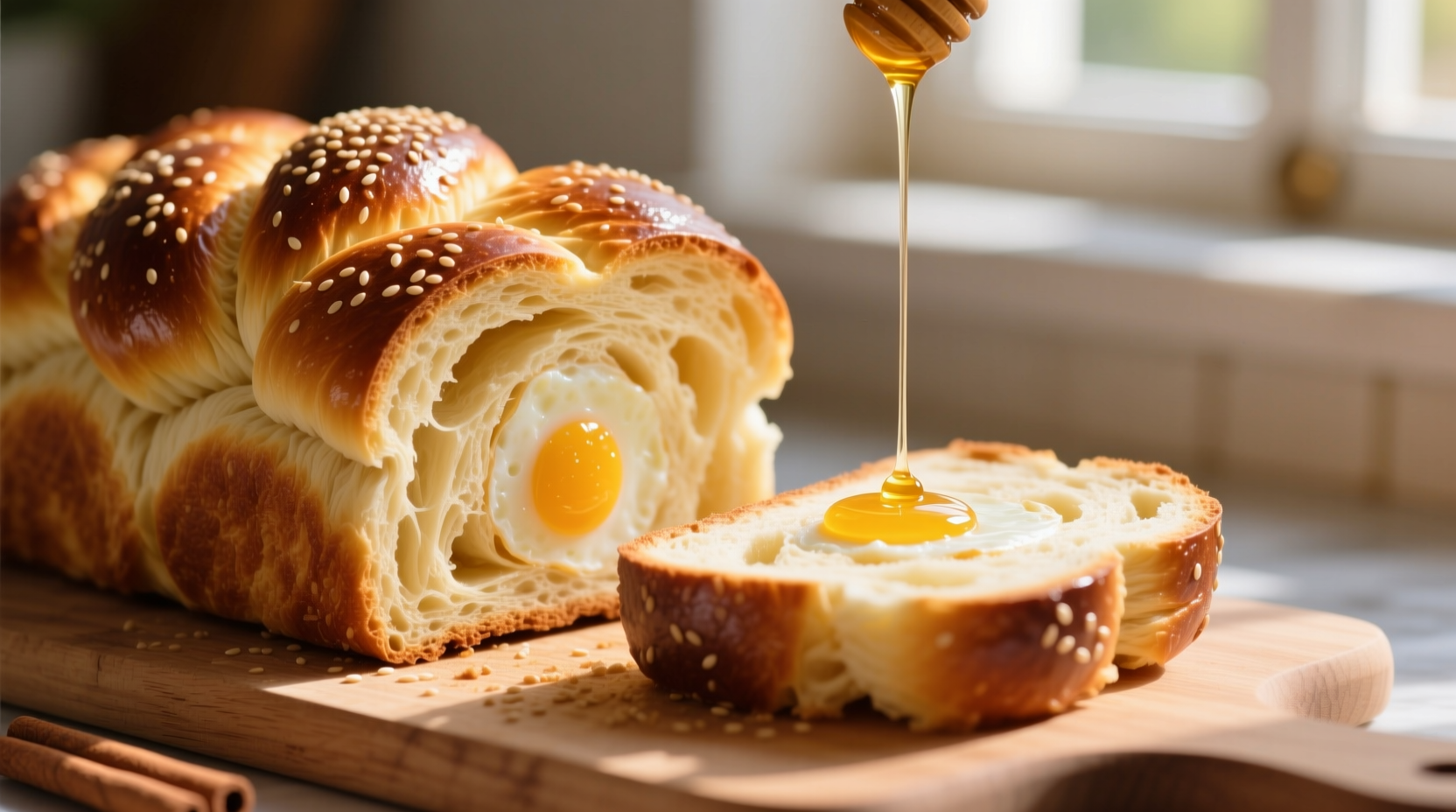Ever wondered what makes challah bread so special beyond its beautiful braided appearance? If you've never tasted this traditional Jewish bread, you're probably curious about its unique flavor profile and how it compares to other artisan breads. Understanding challah's distinctive taste helps you appreciate why it's been cherished for centuries across cultures and why it remains a staple at tables worldwide.
The Sensory Experience of Challah
When you take your first bite of freshly baked challah, you'll immediately notice its soft, pillowy interior that practically melts in your mouth. The crust offers a gentle resistance before giving way to that signature tender crumb. Unlike many sweet breads, challah strikes a perfect balance—its sweetness is subtle, never overpowering, making it versatile enough for both breakfast and dinner.
The egg content gives challah its rich, slightly custard-like flavor that distinguishes it from standard white bread. This richness isn't heavy or greasy; instead, it creates a luxurious mouthfeel that carries other flavors beautifully. Whether you're spreading it with butter, dipping it in olive oil, or using it for French toast, challah's flavor profile enhances whatever you pair it with.
| Bread Type | Sweetness Level | Egg Content | Best Uses |
|---|---|---|---|
| Traditional Challah | Mild | High (2-3 eggs) | Shabbat meals, French toast, sandwiches |
| Brioche | Moderate to High | Very High (4+ eggs) | Desserts, sweet breakfasts |
| White Bread | Neutral | None | Everyday sandwiches, toast |
| Ciabatta | Neutral | None | Bruschetta, paninis |
What Creates Challah's Distinctive Flavor?
The magic of challah's taste comes from its simple yet carefully balanced ingredients. Traditional challah contains just six basic components: flour, water, yeast, eggs, sugar or honey, and salt. Each plays a crucial role in creating that beloved flavor profile.
Eggs are challah's secret weapon, contributing both richness and structure. They create that golden color and tender texture while adding a subtle custard-like note. The sugar or honey provides just enough sweetness to balance the yeast's natural tang without making the bread dessert-like. Salt enhances all the other flavors and controls yeast activity for optimal texture.
According to culinary historians at the Jewish Food Society, challah's flavor profile has evolved over centuries while maintaining its essential character. Originally made without eggs in some communities due to cost, the modern egg-enriched version became standard as eggs became more accessible. This historical shift explains why some traditional recipes vary in richness.

Texture: Where Challah Truly Shines
While flavor is important, challah's texture might be its most remarkable feature. The high egg content creates a crumb that's incredibly soft yet substantial enough to hold up when used for sandwiches. When properly baked, challah should have a thin, slightly shiny crust that gives way to that signature airy interior.
Professional bakers note that challah's texture makes it particularly well-suited for applications where structure matters. Unlike brioche, which can be too delicate for certain uses, challah maintains its integrity when soaked in egg mixtures for French toast or used for stuffing. Its slight elasticity also makes it perfect for tearing and sharing—a key aspect of its traditional role in communal meals.
How Preparation Affects Taste
The way challah is prepared significantly impacts its final flavor. The braiding technique isn't just for show—it affects how the bread bakes and develops flavor. Tighter braids create more even cooking, while looser braids allow for more crust development on the strands.
Many traditional recipes call for an egg wash before baking, which contributes to that beautiful golden color and adds another subtle layer of richness. The baking temperature also matters—too hot and the exterior burns before the interior cooks; too low and the bread loses its distinctive texture.
When and How to Enjoy Challah
Challah shines in multiple contexts throughout the week. For traditional Jewish families, it's central to Shabbat meals, where its subtle sweetness complements both savory and sweet dishes. But you don't need to observe Shabbat to appreciate challah's versatility.
Try it fresh the day it's baked for the ultimate experience—simply with butter or a drizzle of honey. The next day, it makes exceptional French toast that absorbs custard beautifully without falling apart. Many chefs recommend using day-old challah for bread pudding, where its rich flavor enhances the dessert without overwhelming it.
Food scientists at the Culinary Institute of America note that challah's balanced pH level makes it particularly responsive to flavor pairings. Its slight sweetness complements both savory ingredients like smoked salmon and sweet accompaniments like fruit preserves, making it uniquely versatile among enriched breads.
Common Misconceptions About Challah's Taste
Many people assume challah is a sweet bread like brioche or Hawaiian rolls, but this misunderstands its nuanced flavor profile. While challah contains sugar, it's not dessert-level sweet—it's designed to complement meals rather than serve as a treat itself.
Another misconception is that all challah tastes the same. In reality, regional variations exist: Ashkenazi challah tends to be richer and slightly sweeter, while Sephardic versions might incorporate orange blossom water or anise for additional flavor dimensions. Some modern variations include raisins or other additions, but traditional challah remains beautifully simple.
Getting the Most Authentic Challah Experience
To truly appreciate challah's flavor, seek out freshly baked versions from bakeries that follow traditional methods. Commercial versions often contain preservatives and additional sweeteners that alter the delicate balance of flavors.
When evaluating challah, look for these quality indicators:
- Golden, slightly shiny crust (from proper egg wash)
- Uniform crumb structure without large air pockets
- Aroma that's yeasty with subtle sweetness
- Texture that's soft but maintains structure
Remember that challah's flavor develops slightly as it cools—the residual heat continues cooking the interior, and the flavors meld together. For the most authentic experience, try it as it's traditionally served: torn by hand rather than cut with a knife, emphasizing its role in bringing people together around the table.











 浙公网安备
33010002000092号
浙公网安备
33010002000092号 浙B2-20120091-4
浙B2-20120091-4